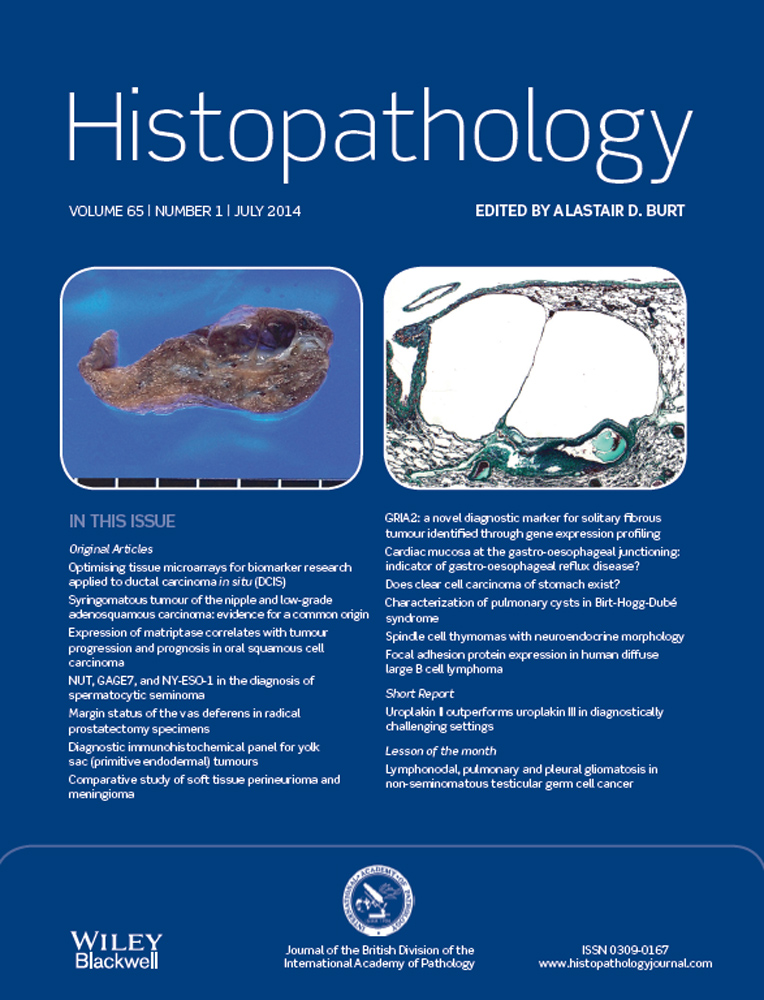Spindle cell thymomas with neuroendocrine morphology: a clinicopathological and immunohistochemical study of 18 cases
Abstract
Aims
To present 18 cases of spindle cell thymoma (WHO type A) with prominent neuroendocrine morphology.
Methods and results
The patients were nine men and nine women aged 36–76 years (average: 56 years). Clinically, the patients presented with non-specific symptoms such as chest pain, or were entirely asymptomatic. None of the patients had a history of autoimmune syndrome. Surgical resection was performed in all patients. The tumour size ranged from 30 to 110 mm. Macroscopically, the tumours were described as light brown or tan masses with a homogeneous and solid appearance. Microscopically, all tumours showed areas that closely resembled the typical growth pattern of neuroendocrine tumours, i.e. rosette-like structures or a trabecular, insular or ribbon-like arrangement of tumour cells. Areas of more conventional spindle cell thymoma were present in all cases. Seven cases were encapsulated, and 10 cases were invasive tumours. Immunohistochemically, the tumours were positive for pancytokeratin but negative for synaptophysin and chromogranin A. Follow-up information for 10 patients showed that all patients were alive after a period ranging from 1 month to 6 years.
Conclusions
Familiarity with this particular pattern of thymoma is important in order to separate this tumour from true neuroendocrine carcinoma and prevent unnecessary adjuvant treatment.




